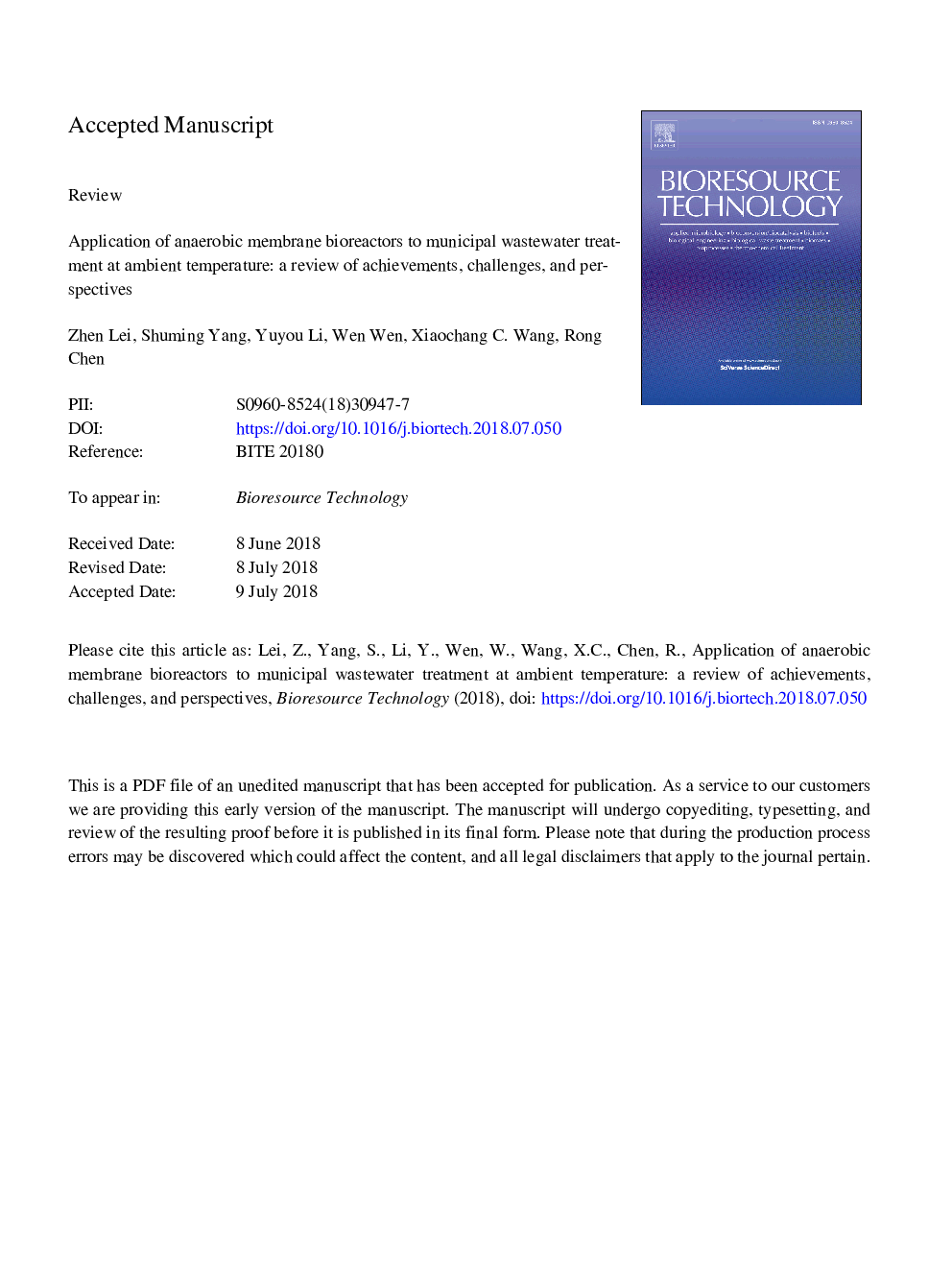| Article ID | Journal | Published Year | Pages | File Type |
|---|---|---|---|---|
| 7065915 | Bioresource Technology | 2018 | 50 Pages |
Abstract
This review surveys the implementation of anaerobic membrane bioreactors in municipal wastewater treatment at ambient temperature. High chemical oxygen demand (COD) removal efficiencies and methane conversion rates were achieved under various conditions, while also achieving a low sludge yield of 0.04-0.09â¯g volatile suspended solids (VSS)/g COD. A survey of energy demands for pilot-scale anaerobic membrane bioreactors showed that they could be energy neutral or even positive, even though high energy (0.08-0.35â¯kWh/m3) is required to clear membrane fouling. Thus, the use of anaerobic membrane bioreactors in municipal wastewater treatment at ambient temperature is very promising. However, some challenges such as membrane fouling control, methane in effluent, low COD/SO42â-S ratio, and deficiencies in alkalinity should be addressed, especially the latter. Future research perspectives relating to the challenges and further research are proposed.
Related Topics
Physical Sciences and Engineering
Chemical Engineering
Process Chemistry and Technology
Authors
Zhen Lei, Shuming Yang, Yu-you Li, Wen Wen, Xiaochang C. Wang, Rong Chen,
